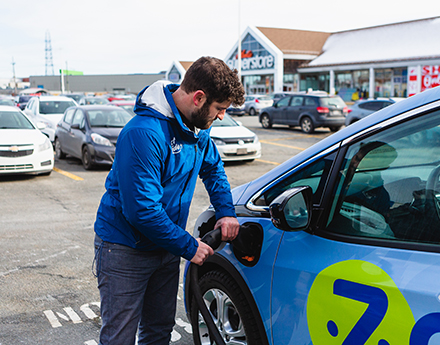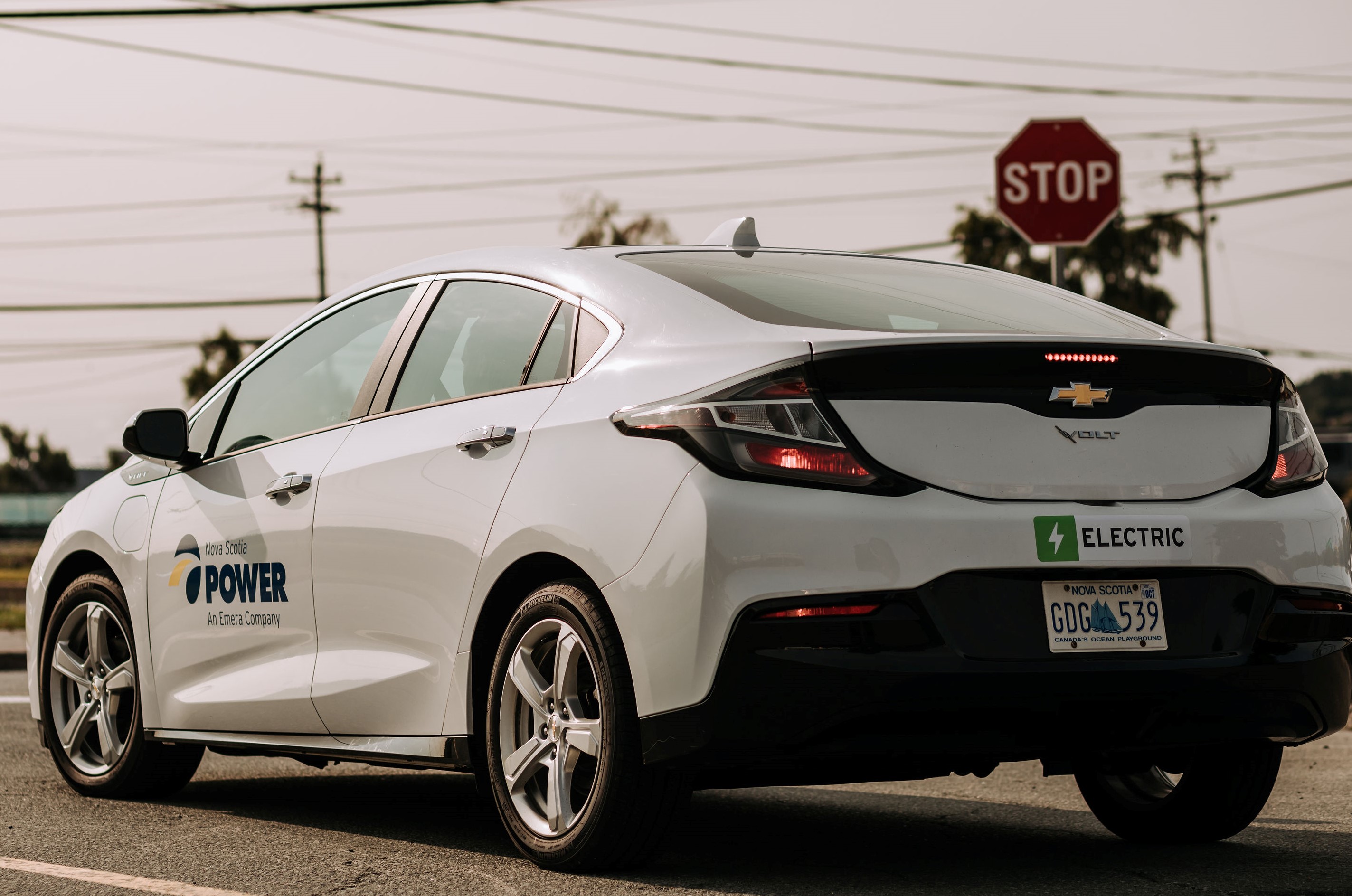What to know before buying an electric car
By 2035, all new cars and light-duty trucks sold in Canada will be zero-emission vehicles. With interim targets of 20 per cent by 2026 and 60 per cent by 2030. It’s a shift that’s going to shape transportation and make travel a lot greener—and more affordable, especially with gas prices on the rise.

Electric vehicles are the future! They have many exciting benefits like helping you reduce costs over time, cut down on maintenance, and lower your carbon footprint from driving.
Are you thinking about going electric for your next vehicle purchase? Curious if it’s an affordable option?
We asked our friends at Next Ride to answer your questions. Next Ride is a provincially funded, not-for-profit, low-carbon transportation initiative focused on helping Nova Scotians learn about driving electric. They’re not a car company or dealer—they just really love EVs and believe in the benefits!
Clean Transportation Manager, Sarah Balloch is breaking down the top things you need to know about electric vehicles.
Choosing the right vehicle
How do I decide which EV is right for me?
It’s best to start by asking yourself what you’ll be using the vehicle for: is it just for your commute, or will you be driving long distances? Will you be using it for hauling or towing?
The average commute is between 25 to 40 km—every EV on the market today can meet that.
Once you’ve looked at your day-to-day, consider your longer drives—what routes are you taking? What’s the charging infrastructure like along the way? How often do you take longer trips?
Answering these questions can help you narrow down the list of which EVs are right for you, including how much range you need.
What are the differences between an EV and a traditional gas car?
Driving an EV is very similar to driving a gas-powered car—it just has a little more pep! It makes for a smooth drive, and it can easily pick-up and go. You might notice the regenerative braking as soon as you take your foot off the accelerator—regenerative braking slows the car down as soon as you take your foot off the accelerator and charges the battery on the go.
One of the benefits of driving electric is that they typically need less maintenance and repairs, and of course, there’s the difference between filling up on gas and plugging into a charging station. “Filling up” at home means you can always wake up to a full charge.
While the purchase cost of an electric vehicle can be higher—because the cost of electricity is much lower than the cost of gas—you can save over the lifetime of ownership. There are also rebates available through the provincial and federal government to help lower the upfront cost and make it easier to save.
Going the distance in an EV
How far can an EV travel on one charge?
Most electric vehicles on the market today have a range between 300 to 400 km. However, external factors like the weather can affect range. If your vehicle has a range of 400 km, that might drop to 300 km in cold winter temperatures.
The type of driving you do can also make a difference—like highway versus city driving, or aggressive versus passive driving. The important thing to note is that no matter what EV you’re driving, the car is constantly calculating how much range you have left to help you make decisions on where and when to stop and charge.
How do I know how much range I need?
It’s helpful to look at both your regular and irregular driving habits: Do you live rurally and come into the city once a month? Do you travel to a cottage or another province every few months? Decide what range you’re comfortable with based on how you’ll use the EV and your lifestyle.
Making an impact for the environment
How can driving electric make a difference for the environment?
This is perhaps the most exciting aspect of going electric! It’s a chance to lower your carbon footprint from driving. A gas-powered car creates emissions when driven, while an EV doesn’t have any tailpipe emissions. Even better, our grid is getting greener, just as our transportation is getting greener! Nova Scotia Power is working towards 80 per cent renewable energy by 2030. It means that when you drive electric, you’re making a bigger impact for the environment over time.
Charging up
 How do I get a home charger installed?
How do I get a home charger installed?
Any qualified electrician can install a home charger for you. It’s best practice to obtain a couple quotes and choose a contractor you are comfortable with.
How much does it cost to get a home charger installed?
Home charger installation costs can vary depending on the location of your electrical service panel, where you want to install the charger, the capacity of your electrical service, and the type of charger you install. Getting a quote before you buy your vehicle is recommended so you understand the total cost. Estimates may range from $1,000 to $2,000 or more including the equipment.
How much does it cost to charge at home?
You pay the same price for electricity delivered to your vehicle as you do for electricity delivered to your home. For most people driving an average EV, a full charge will cost $9 to $11.
Are there any rebates for installing a charger at home?
Currently, there are no rebates for installing a charger at home in Nova Scotia. However, Nova Scotia Power continues to explore how to help customers reduce their total cost of ownership by sharing in the value of electric vehicles through their EV Smart Charging Program.
What are the different ways EVs can be charged?
EVs can be charged on a regular 120V outlet (known as Level-1 charging). This typically only adds around 7 to 9 km of range per hour. Most drivers might benefit from charging using a Level-2 home charging station, which uses a 240V circuit. Most commonly, this charges the vehicle at 32 amps, adding 30+ km of range per hour, allowing you to wake up to a full charge every day. An electrician can help you get set up.
Finally, Level-3 fast charging stations use direct current (DC) to charge the battery quickly. This is what you would typically access on a longer trip and can charge an EV battery up to 80 per cent in 30 minutes. Nova Scotia Power operates the province’s only end-to-end charging network, allowing you to drive emissions free from Sydney to Yarmouth.
Learn more about charging an electric vehicle at EV Assist.
What's next?
Where can I test drive an EV?
We host test drive events all over the province! Check out our list of events on our website to find out when we’re coming to your community.
What does the future of EVs look like?
The future of EVs is looking brighter every day. The technology continues to improve every day– more range, more power, and more makes and models to meet the needs of Nova Scotians.
Have more EV questions? Get in touch with Next Ride to set up a call or even a test drive, so you can experience the benefits of an EV firsthand.
The Next Ride team continues to tour the province to help Nova Scotians experience the excitement of an electric ride—and discover all the ways EVs are more affordable and versatile than ever.
For more information about driving electric, visit nspower.ca/EV.
Share This Post:





 How do I get a home charger installed?
How do I get a home charger installed?
